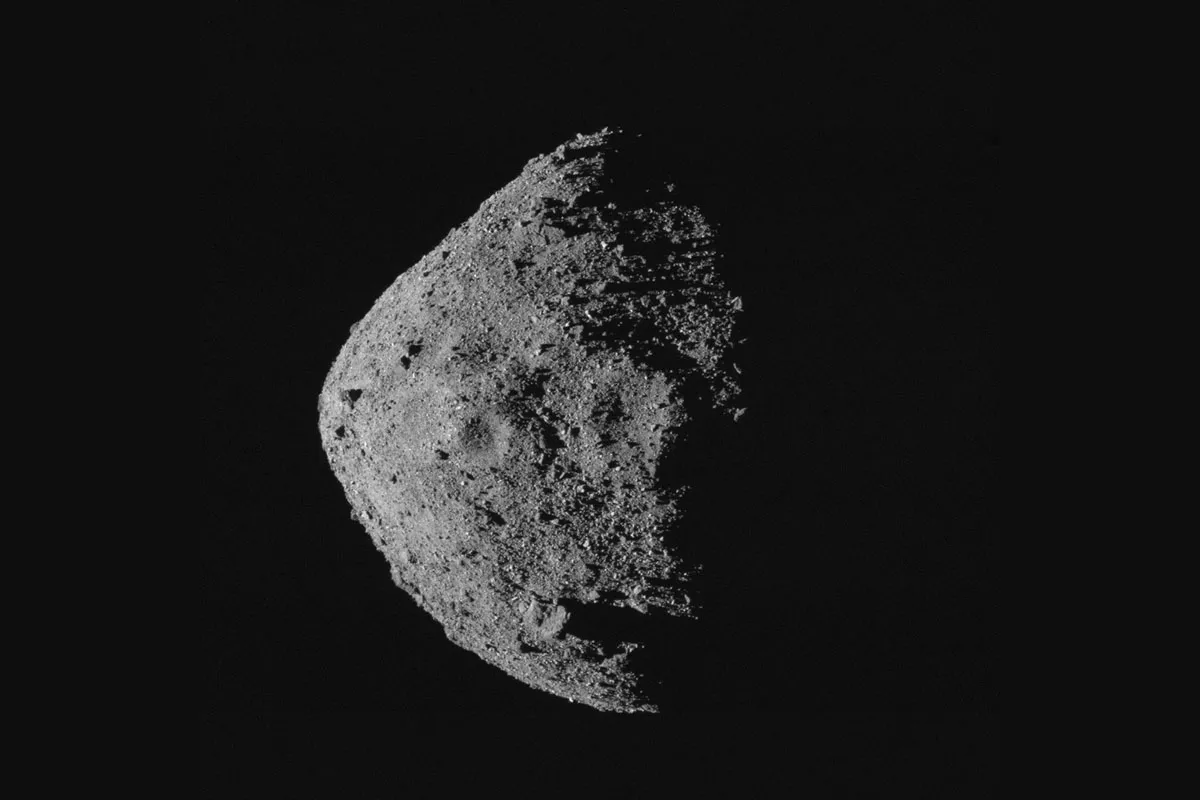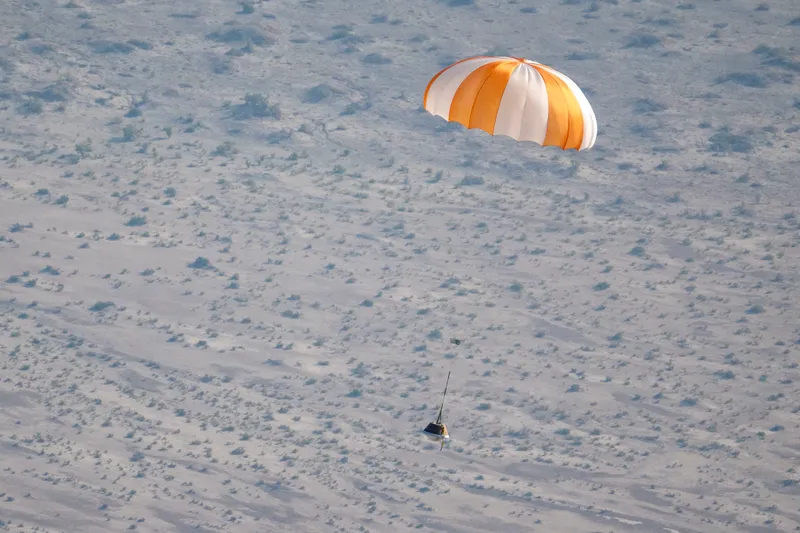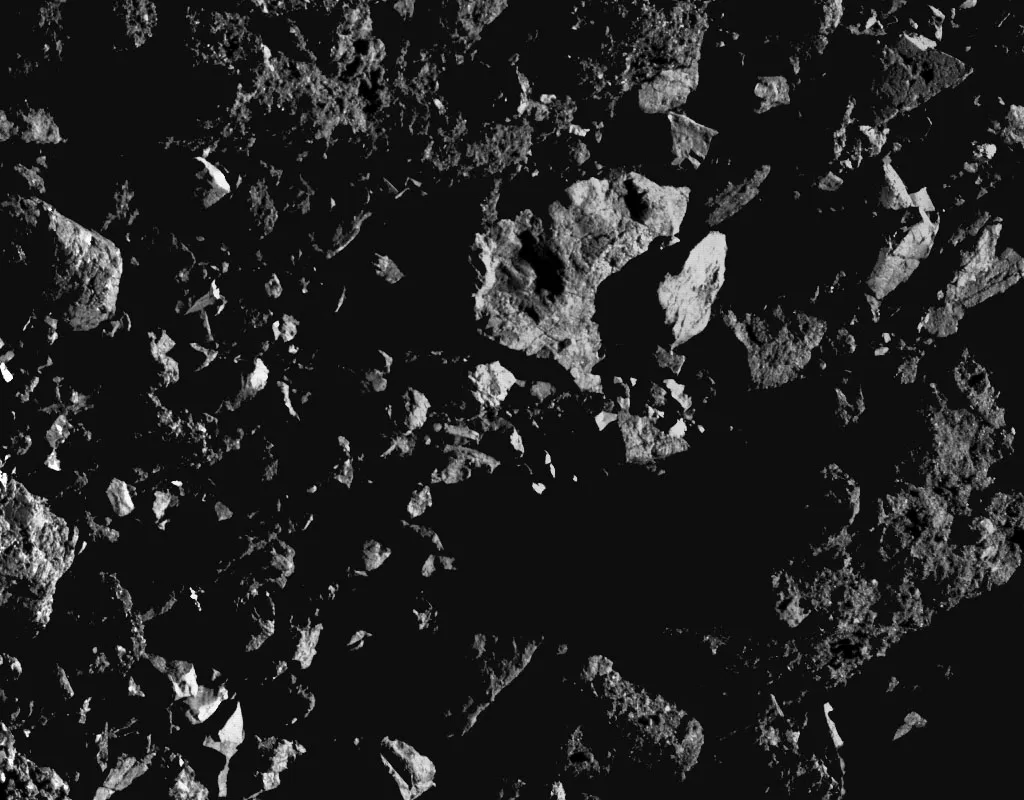NASA’s OSIRIS-REx mission has successfully delivered a sample of Asteroid Bennu back to Earth.
The capsule of rocks and dust collected from the asteroid landed in a region of the US Department of Defense’s Utah Test and Training Range near Salt Lake City at 10:52 EDT (14:52 UTC) on Sunday 24 October.
The pristine samples were collected by the OSIRIS-REx spacecraft at Asteroid Bennu on 20 October 2020.

The spacecraft collected a sample of dust and pebbles from the surface and sent it back to Earth in the Sample Return Capsule.
NASA says the sample is thought to amount to around 250g of material.
After the landing, the capsule was taken by helicopter to a temporary clean room in a hangar on the training range, where it was 'purged' with a continuous flow of nitrogen.
This 'nitrogen purge' occurs because nitrogen is a gas that doesn’t interact with most other chemicals.
This helps prevent the container from being contaminated and keeps the asteroid sample pristine for scientific study.

Today, Monday 25 September, the Bennu sample is due to be transported in its unopened canister by aircraft to NASA’s Johnson Space Center in Houston.
Scientists will then disassemble the canister, extract and weigh the sample and create an inventory of the rocks and dust.
Eventually, samples of asteroid Bennu will be sent to scientists across the world for study, including the University of Manchester in the UK.
How the OSIRIS-REx landing happened

The OSIRIS-REx sample capsule entered Earth's atmosphere at 10:42 EDT ( 14:42 EDT) while travelling at speeds of 27,650 mph (44,500 kph).
This occurred off the coast of California at an altitude of 83 miles (133 kilometers).
The capsule then took 10 minutes to make its landing on the military range.
Two parachutes deployed to slow the capsule's rate of descent and stabilise it, bringing its speed down to 11 mph (18 kph) as it landed.
Radar, infrared and optical instruments in the air and on the ground were tasked with tracking the OSIRIS-REx capsule during its landing within a 36-mile by 8.5-mile (58-kilometer by 14-kilometer) area.
A recovery team was then sent to retrieve the sample, which occurred at 11:07 EDT (15:07) EDT.
Within 70 minutes, the team gathered the sample and began transporting it to a temporary clean room on the range.

Why return an asteroid sample to Earth?
OSIRIS-REx is what's known as a sample return mission.
Just like Japan's Hayabusa2 mission, the aim is to collect a sample of a space rock and return it to Earth for study under controlled conditions.
Space rocks like asteroids and meteors are primordial pieces left over from the formation of the Solar System.
Studying them can reveal clues as to how our Solar System formed, what it was like in its infancy and how it has evolved over time.
And while meteorites found on Earth can provide important information, they will have been contaminated on their journey to terra firma.
Collecting and returning a pristine sample from space under controlled conditions gives scientists the chance to study a pure piece of the Solar System's history.

OSIRIS-REx timeline
The OSIRIS-REx spacecraft's journey has been a long one. Here's a summary of key moments.
- 8 September 2016 - OSIRIS-REx launches
- 3 December 2018 - OSIRIS-REx arrives at Asteroid Bennu
- 2019 - 2020 - Spacecraft searches for safe sample collection site
- 20 October 2020 - OSIRIS-REx collects sample of Asteroid Bennu
- 10 May 2021 - Sample's return to Earth begins
- 24 September 2023 - OSIRIS-REx sample successfully lands on Earth
What next?
"Today marks an extraordinary milestone not just for the OSIRIS-REx team but for science as a whole,” says Dante Lauretta, principal investigator for OSIRIS-REx at the University of Arizona, Tucson.
"Successfully delivering samples from Bennu to Earth is a triumph of collaborative ingenuity and a testament to what we can accomplish when we unite with a common purpose.
"But let’s not forget – while this may feel like the end of an incredible chapter, it’s truly just the beginning of another.
"We now have the unprecedented opportunity to analyse these samples and delve deeper into the secrets of our Solar System."

